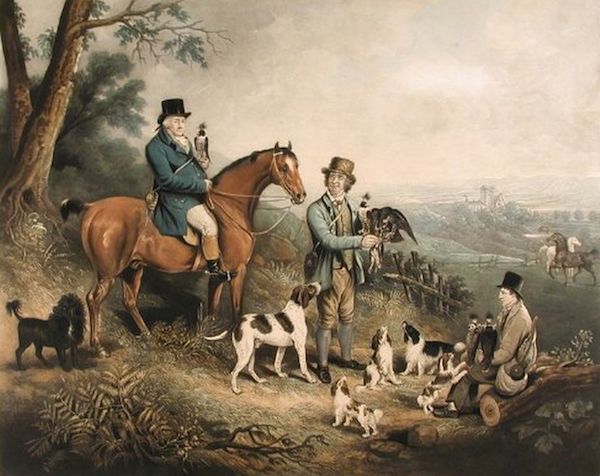
A gundog’s task is to find game for its hunting master, not catch it, herself. These dogs were developed long before guns were, and they worked with falconers, not shooters. There’s been a revival in falconry, and our role here isn’t to discuss the merits, or lack of, in the sport, but to share information about dogs in falconry which, as we hear it, is growing in the United States.
In the UK alone, there are some 2,000 “hawking” dogs today, mainly Brittanys, spaniels and pointers, but we’ve come across articles from falconers who’ve worked with a Large Munsterlander, Airedales, Cocker Spaniels, West Highland White Terriers and Dandie Dinmonts. In fact, we ever heard about a falconer in Eastern Washington who uses a Clumber Spaniel, and he isn’t alone. Estimates put the number of active falconers in the US somewhere between 3,000 and 5,000 (this, an increase from about 1,500 participants in the mid-20th century). Don’t be fooled into thinking that this is a lot of falconers because in Dubai alone, there are closer to 20,000 participants, though admittedly, falconry is part of their heritage.
Despite the small number of American falconers, the expertise and care that American falconers put into their craft has put them to the forefront of breeding and bird-based innovation. They take a scrupulous, scientific approach to genetic diversity, and as a result, US birds are in high demand in the world’s more raptorial nations.
Dogs and birds work as a team (traditional and modern falconry can also involve horses), and most birds quickly learn to work with a dog once they realize what an asset the dog is by increasing their chance for a “good slip.” Indeed, it’s not uncommon to see a falconry bird paying more attention to the working dog than the falconer himself. We came across one blog that showed the falcon resting on its perch in a living room next to the family dog, the bird as much a family member as the dog. Other sites, however, insist that a falcon is not a pet and sneer at those who have a “family falcon.”
Image: “Hawking” by James Howe – 1834
